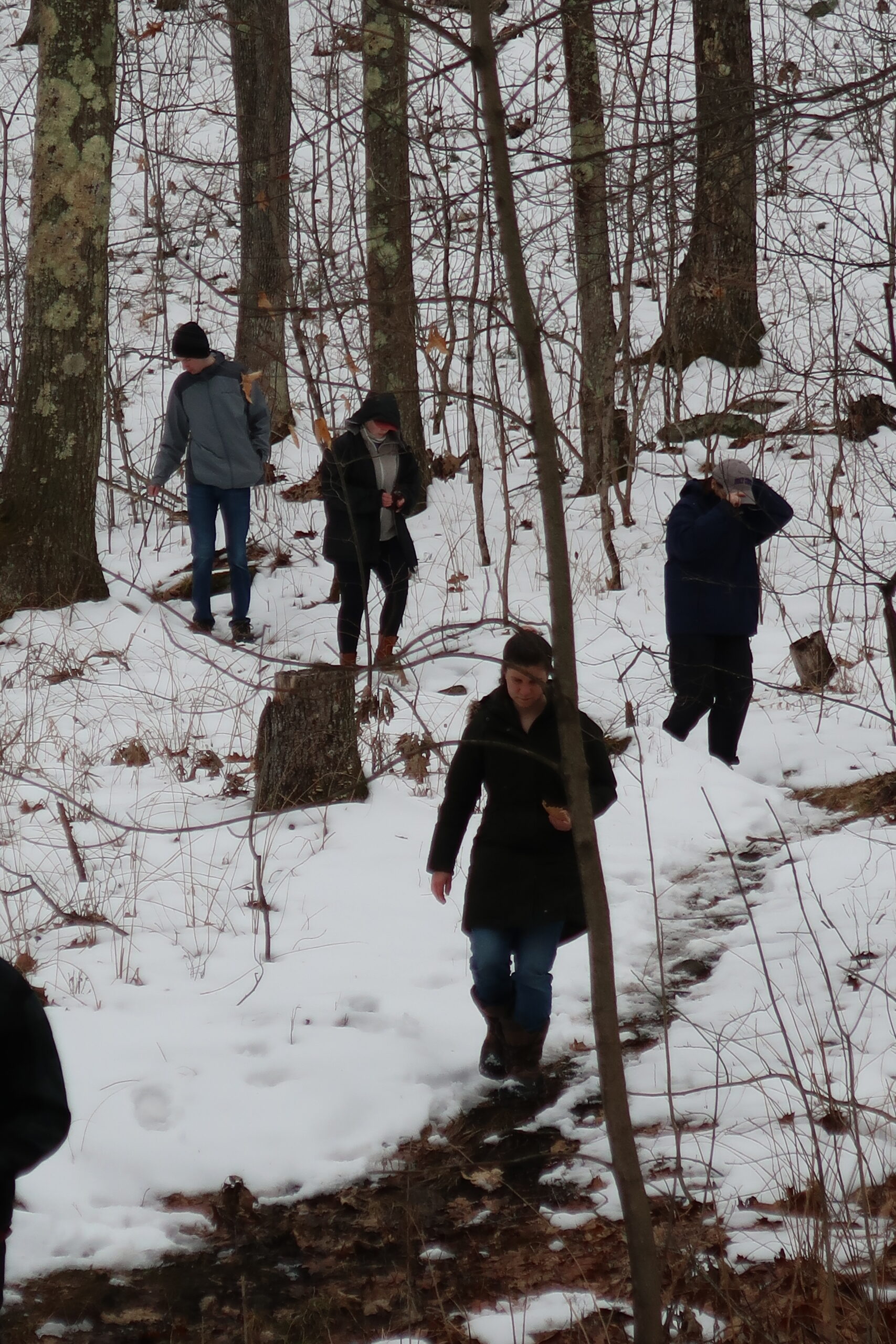by Louisa Rossel
In mid-March, just as the snow began to melt and signs of spring arose from a long winter slumber, students from the College of the Holy Cross in Worcester, MA arrived at Agape for a rural immersion. On their first day of a week’s stay, as an Agape staff person, I guided the students through the forest on a 5 Senses Meditation Walk. It was essential for students to familiarize themselves with the vast beauty and magic of Central Massachusetts on the cusp of the spring season.
The students gathered in silence with me at the entrance of an Agape Forest trail and took a collective breath. A sense of stillness and calm meandered through the leafless trees. The forest floor was covered by the decaying life of the previous summer, and brown seemed to be the only color that stretched for miles.
After a few minutes of silent walking, as their Forest Meditation Guide, I invited students to focus on their sense of smell. With the abundance of lichen growing on the trees and rocks surrounding Agape, this signals that the air quality is pure and healthy. Sadly, breathing this fresh, clean air is a privilege which we must not take it for granted. The students continued along the trail, breathing deeply while walking uphill and basking in the brisk air.
At the next stop along the trail, I asked the students to shift their focus to their sense of hearing. Some of the Holy Cross crew named sounds they heard: bird songs, the howling wind, the creak of old trees, and the rustle of the leaves. I asked students to close their eyes and paint a picture in their minds of the sounds around them. Their individual imaginations took this prompt and expanded it far beyond my original vision.
Some students pictured an orchestra’s sheet music. The wind served as the ever-flowing melody of the song of the forest, while bird songs and other unpredictable sounds added new and intriguing notes to the musical masterpiece.
Another student imagined the creation of a watercolor painting with the sounds of the wind as gentle, soft strokes of gray. Red paint splattered onto paper signified the sharp tones of bird warning calls.
Everyone allowed the sounds of the forest to guide the creation of the masterpiece formulated in each mind. I was inspired and humbled to witness and facilitate the discussion.
The longer the students listened and stood in one place, the quieter the forest became. The warning calls of birds faded from loud and shrill to distant and gentle. The crunch of the leaves ceased, footsteps in place, planted firmly on the ground. The group circle quickly became part of the peace and tranquility of the forest landscape.
After, the silence was broken, the students were tasked with using their sense of sight to collaboratively search for elements in nature that intrigued their interest. They noticed thick, emerald-green moss that continued growing on a large bounder despite being blanketed in a thick clump of snow. They took a close look at all the varying colors and grooves of tree bark. Finally, they built a little snowman and decorated it with the finest stones and sticks they could find. With this exercise, students explored their natural curiosity and followed their sense of sight, making intriguing discoveries.
Lastly, I asked two of the students to pick up two objects that stood out to them along the forest floor. With their objects in hand, they felt their objects, better understand the complexities of texture and structure. I asked them to leave behind one of their objects at the entrance of the Agape trail as an expression of gratitude for all they had seen, heard, smelled, and felt along the trail.
They brought the other object back to their rooms as a reminder of all the beauty and wonder that surrounds us, if only we are humble and gentle enough to open ourselves to exploration.
Louisa, a Stonehill grad, former Agape intern and now at AmeriCorps has followed in the tradition of a Stonehill College/Agape alliance, begun in the 1980’s.

